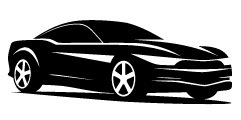Tesla vehicles are renowned for their cutting-edge technology and commitment to safety. By integrating advanced safety features and innovative design, Tesla ensures that its cars are among the safest on the road. This blog explores the key safety features that make Tesla a leader in automotive safety, highlighting why these features are crucial for drivers and passengers alike.
1. Active Safety Features
Tesla’s active safety features are designed to prevent accidents before they occur. These include:
-
Autopilot:
Offers features like adaptive cruise control and lane-keeping assist, helping drivers maintain safe distances and stay within lanes.
-
Collision Avoidance Assist:
Warns drivers of potential collisions and can apply brakes automatically to prevent accidents.
-
Lane Assist:
Provides alerts when the vehicle drifts out of its lane without signaling, enhancing highway safety.
2. Passive Safety Features
Tesla’s vehicles are built with a strong focus on passive safety, which includes:
-
Rigid Structure:
The battery pack is mounted low in the vehicle, providing a low center of gravity and reducing rollover risk.
-
Crumple Zones:
Designed to absorb impact energy, protecting occupants during a collision.
-
Airbags:
Strategically placed to protect occupants from all sides in the event of a crash.
3. Advanced Driver Assistance Systems (ADAS)
Tesla’s ADAS technologies enhance the driving experience by providing additional safety layers:
-
Cabin Camera:
Monitors driver attentiveness and provides alerts if the driver appears distracted.
-
Sentry Mode:
Monitors the vehicle’s surroundings when parked, alerting owners of potential threats via the Tesla app.
-
Pin to Drive:
Adds an extra layer of security by requiring a PIN before the vehicle can be driven.
4. Over-the-Air Software Updates
Tesla’s commitment to safety is evident in its regular over-the-air updates, which continuously improve safety features:
-
Real-Time Data Utilization:
Tesla uses data from its global fleet to enhance existing safety features and introduce new ones.
-
Continuous Improvement:
Updates allow Tesla to refine safety systems based on the latest research and real-world data.
5. High Safety Ratings
Tesla vehicles consistently receive top safety ratings from organizations like the National Highway Traffic Safety Administration (NHTSA) and the Insurance Institute for Highway Safety (IIHS). These ratings reflect Tesla’s dedication to building some of the safest cars on the road.
Conclusion
Tesla’s innovative approach to vehicle safety combines advanced technology with robust design, ensuring that drivers and passengers are well-protected. From active and passive safety features to continuous improvements via software updates, Tesla sets a high standard for automotive safety. By choosing a Tesla, drivers can enjoy peace of mind, knowing they are in one of the safest vehicles on the road.
FAQs
How does Tesla’s Autopilot enhance safety?
Autopilot includes features like adaptive cruise control and lane-keeping assist, which help maintain safe distances and keep the vehicle centered in its lane, reducing the likelihood of accidents.
What is Sentry Mode, and how does it work?
Sentry Mode monitors the vehicle’s surroundings when parked. If suspicious activity is detected, the vehicle records video and alerts the owner via the Tesla app.
Can Tesla vehicles receive safety updates remotely?
Yes, Tesla vehicles receive over-the-air updates that can enhance existing safety features and introduce new ones, ensuring the car remains up-to-date with the latest safety technology.
Why are Tesla vehicles considered safe?
Tesla vehicles are built with a strong structure, advanced safety features, and receive high safety ratings from reputable organizations, making them some of the safest cars available.

